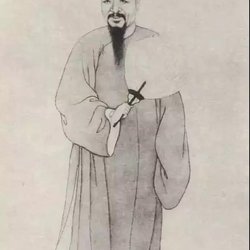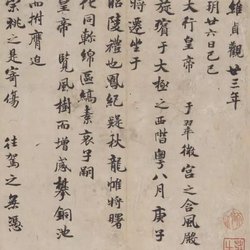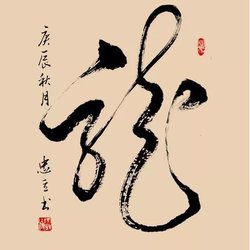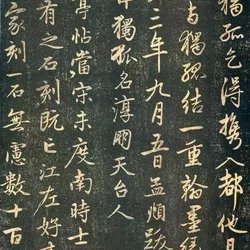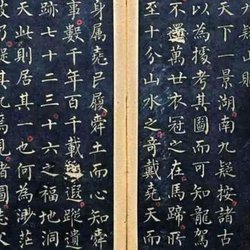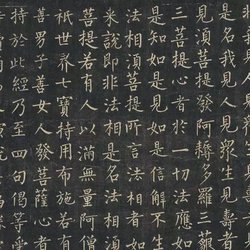The emperor of the Qing Dynasty read poetry and books and learned riding and shooting since he was a child. However, in addition to being very talented in ruling the country and managing the harem, these emperors also liked playing chess, calligraphy and painting, and were especially good at calligraphy. In the early Qing Dynasty, the Ministry of Internal Affairs opened the "Ruyi Pavilion" to cultivate calligraphy and painting talents. The art of calligraphy and painting also became a family heirloom of the royal family. The calligraphy of Kangxi, Yongzheng and Qianlong were all different, and they had formed a unique style of elegance, grace and splendor. The best calligrapher is undoubtedly Yongzheng, whose calligraphy is elegant and wonderful. However, in the current auction market, the calligraphy works of Kangxi and Qianlong, whose calligraphy skills are second, have risen to a high price of several million yuan each, while the truly powerful calligraphy of Yongzheng is difficult to match.
Yongzheng's calligraphy was elegant and vigorous, following the smooth and beautiful path of his father Dong Qichang. Looking at Yongzheng's extant ink writings, we can see that his calligraphy was based on the methods of Zhao Mengfu and Dong Qichang. It is smooth and skillful, elegant and energetic, with fast and orderly writing and a thorough flow of energy. It is rare in the calligraphy of emperors of all dynasties. Yongzheng was a unique emperor. His outstanding talents, strong character, and legendary political career are all amazing.
Yongzheng's running calligraphy uses ups and downs of the brush, uses smooth ink, and has a consistent spirit. It combines the gracefulness of the two kings, the simplicity of the Jin and Tang Dynasties, and the elegance of Dong Qichang. It is quite the style of everyone. Tian Zhongyan wrote in "A Brief Introduction to the Calligraphy of Emperors in the Prosperity of the Qing Dynasty": "Compared with Kangxi and Qianlong's calligraphy, Yongzheng's calligraphy is elegant and beautiful, Yongzheng's calligraphy is bold and bold, and Qianlong's calligraphy is sweet and beautiful. In contrast, Yongzheng's calligraphy has a unique personality. It is more relaxed and the expression of interest is more natural." This evaluation seems to be relatively objective.
Yongzheng's calligraphy was the best among the three emperors of Kangxi, Yongzong and Qianlong. It was more elegant and unrestrained than Kangxi's, and more solemn and solid than Qianlong's. In particular, his regular script was very good. The artistic level of Shizong's calligraphy was better than that of Nai's father, and of course it was higher than that of the "Shiquan Old Man" Qianlong. There are divergent comments about Yongzheng in the historical circles. People pay more attention to his political merits and demerits, and there are very few comments about his artistic accomplishments and achievements. In fact, in terms of personal artistic accomplishments and tastes, Yongzheng was He was very prominent among the emperors of the Qing Dynasty. It is generally believed that among the three emperors, Emperor Yongzheng had the highest level of calligraphy, while Emperor Qianlong was worse. Yongzheng was a unique emperor. His outstanding talents, strong character, and legendary political career are all amazing. His calligraphy is gentle and regular, fully reflecting the cultivation of an aspiring emperor.
Yongzheng's calligraphy is elegant, powerful and magnificent, with the emperor's desire to dominate the powerful. Yongzheng's calligraphy is calm and regular, reflecting the cultivation and tranquility of an aspiring emperor. Japanese scholar Inaba Kimiyama commented on the calligraphy of the three emperors of Kangxi, Yongzheng and Qianlong in his "Comprehensive History of the Qing Dynasty": "Although Qianlong's calligraphy is wonderful, it lacks verve; while Emperor Kangxi has more bone strength but not enough richness; while Yongzheng's calligraphy is talented and energetic. It’s not like the handwriting of a king.”
In November of the 61st year of Kangxi (1722), Yinzhen succeeded to the throne and changed the Yuan Dynasty to Yongzheng. After Yongzheng ascended the throne, he was diligent in political affairs. Although he was only in power for thirteen years, his written records were very rich. Among these calligraphy, the largest number is Zhu's writing. Yongzheng's Zhu's writings range from a few crosses to thousands of words. They are eloquent and coherent, and some are even longer than the original memorial. The content of Zhu's criticism covers a wide range of topics, and there is no shortage of words of encouragement from the emperor to his ministers. These Zhu's writings are relatively relaxed and elegant. It is not difficult to see the influence of Dong Qichang's calligraphy on him. At the same time, the large-character works produced by Emperor Yongzheng were obviously influenced by Zhao Mengfu, while the meaning of Dong Qichang gradually decreased. The reason why Zhu's batches still have the flavor of Dong's calligraphy is probably related to the relatively relaxed and natural writing state.
Princes in the Qing Dynasty had the habit of reading early in the study room and were taught classics and history, including calligraphy. At that time, Kangxi was very fond of Dong Qichang's calligraphy in the late Ming Dynasty. He would follow what his superiors liked and his subordinates. For a time, Yu Nei regarded studying Dong Qichang's calligraphy as the authentic one. At this time, Yinzhen, as a human minister, would inevitably join the team of academic directors. Judging from Yinzhen's early calligraphy, Dong Qichang's calligraphy was indeed his main source of inspiration.
Yongzheng's calligraphy regular script is dignified and flowing, plump and full, with a royal atmosphere. The brush is very refreshing, the stipples are thick, and the structure is natural. It can be seen that he has a very good calligraphy skills. His large-character cursive calligraphy works are particularly outstanding, with smooth pen and ink, ups and downs, and thoroughgoing energy, giving people an uncontrollable passion. These works are not inferior to those of Hanlin calligraphers who work in the inner court. Among the emperors of the Qing Dynasty, Yongzheng was probably the only one who could achieve this goal in calligraphy.
Yinzhen's calligraphy was as beautiful as Dong Qichang's in his early years. From then on, the calligraphy style gradually became thicker and plumper, and the beauty was rounded. Judging from the current works signed "Emperor Fourth Prince" to "Prince Yong", it is very obvious that his calligraphy style is centered on Dong Qichang; detailed analysis shows that his works generally go from beautiful to mellow, and it seems that He also paid attention to Zhao Mengfu's calligraphy in his approach.
The following is an appreciation of the calligraphy of emperors of the Qing Dynasty:
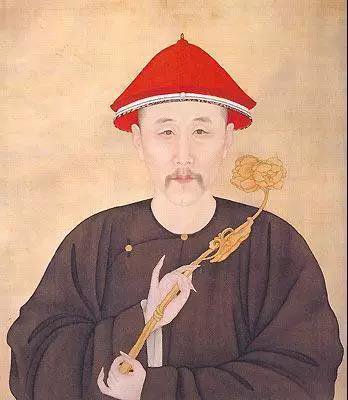
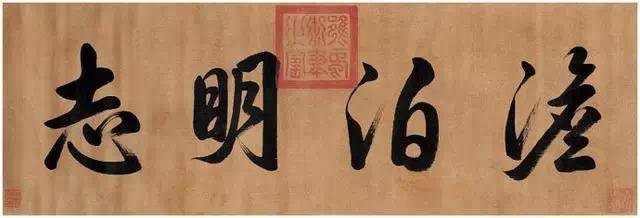
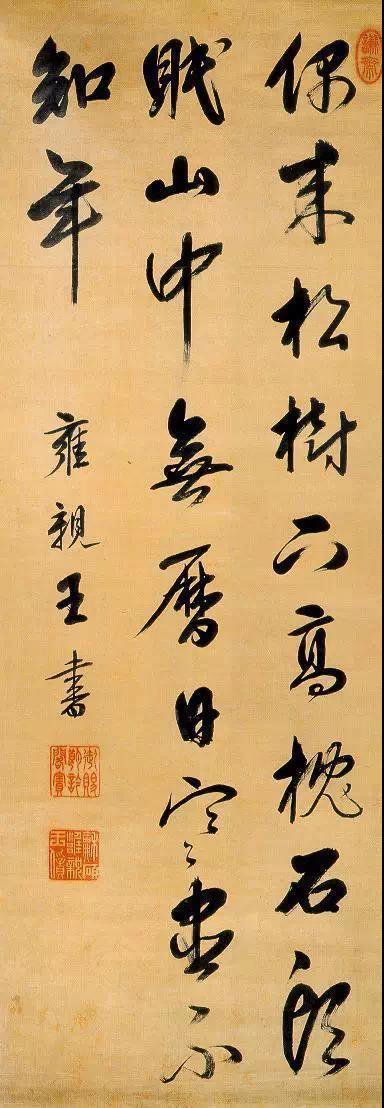
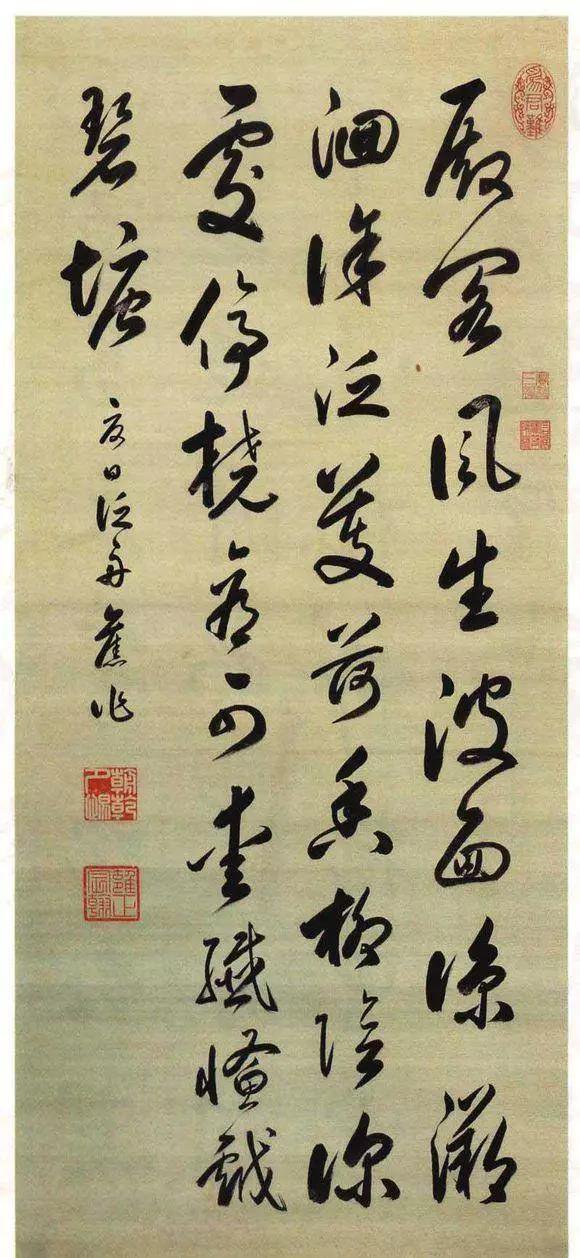
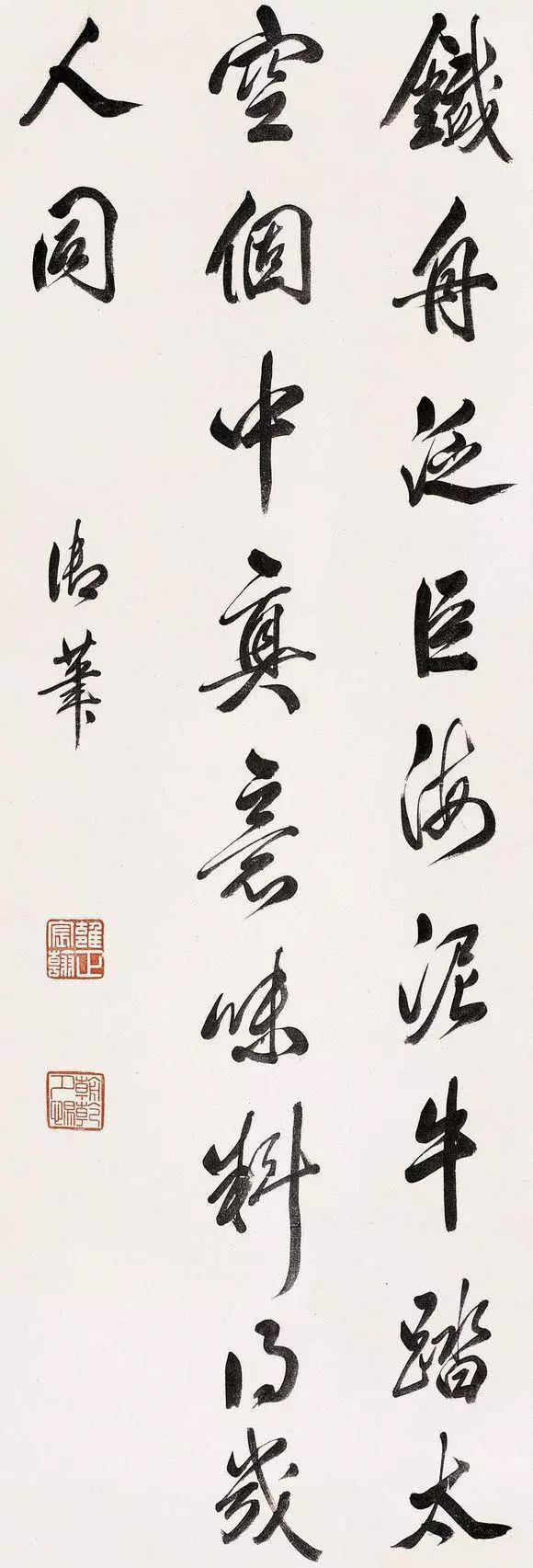
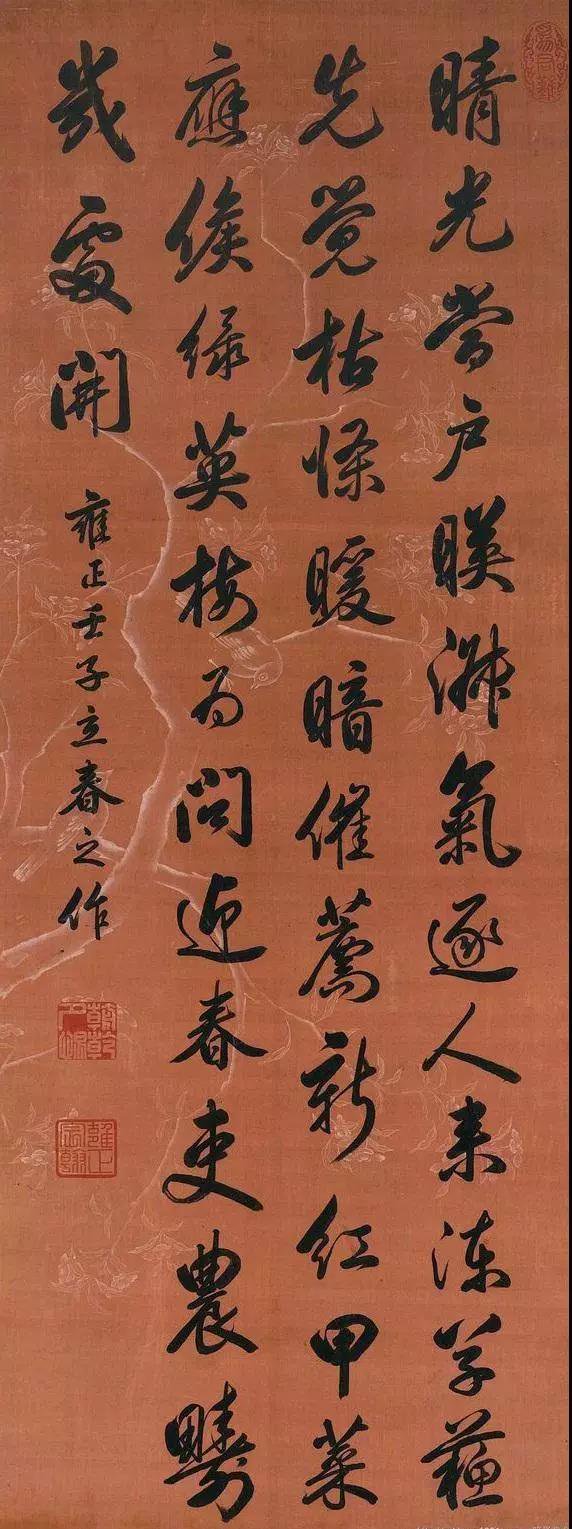
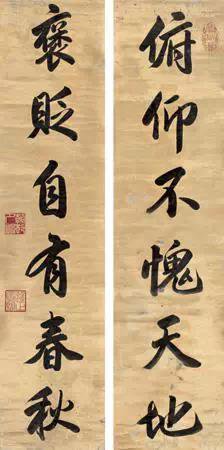
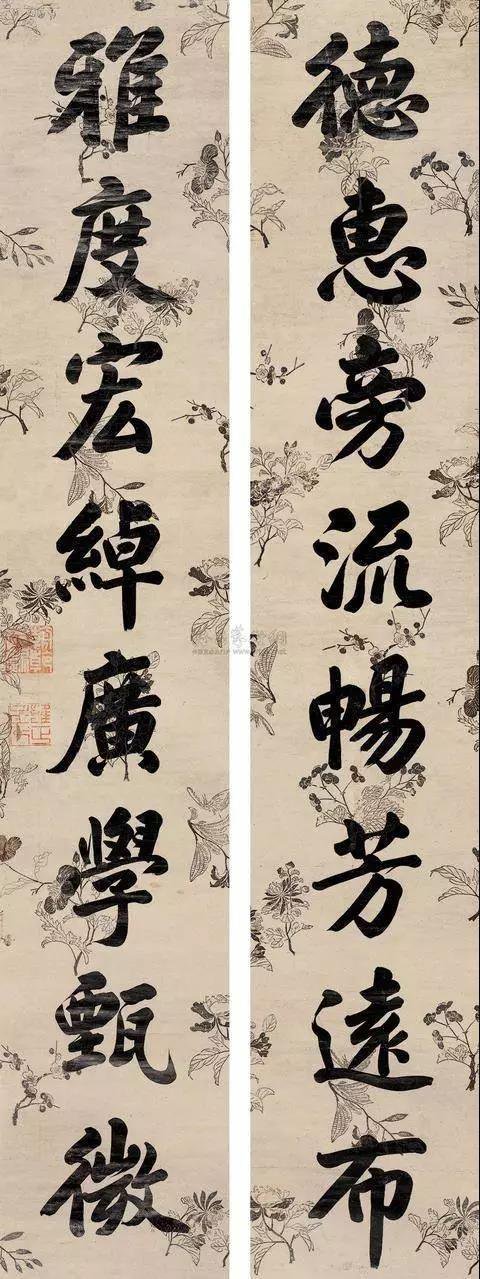
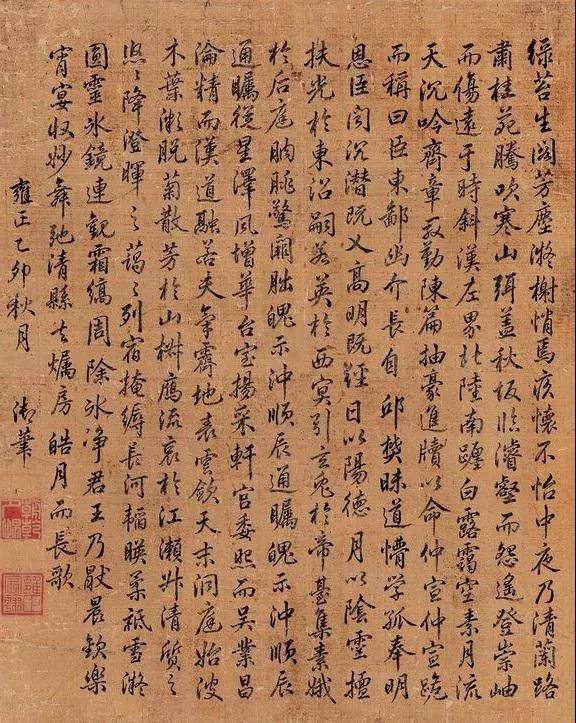
Emperor Yongzheng's reign was only for a short period of 13 years, so few calligraphy works and calligraphy comments before he ascended the throne have been handed down. The overall performance of calligraphy is smooth and skillful, tolerant and natural, elegant and vigorous, with profound strategies, extraordinary style and grand momentum, and has the emperor's desire. A majesty that transcends the mighty. Yongzheng was good at regular script, running script, cursive script, and Bang script, among which cursive script had the highest achievement. The running calligraphy works of Yongzheng in his later years are characterized by a central stroke, steady and smooth strokes, neat structure, delicate bones, and graceful calligraphy, giving people a sense of rhythm and rhythmic beauty.

